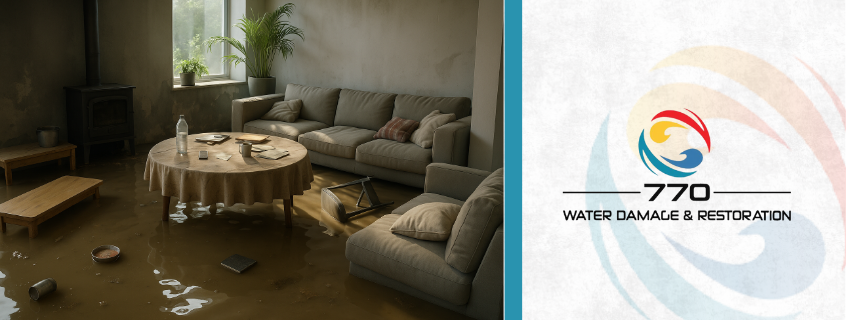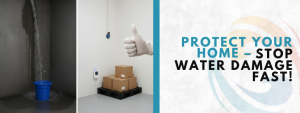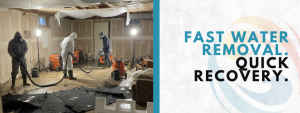
When a tenant leaves a rental property, it can feel like flipping to a new chapter. But before that chapter can begin, there’s one important task every landlord and property manager must handle carefully: the move-out inspection.
Understanding tenant move-out inspection tips is essential for landlords.
These tenant move-out inspection tips can save you unnecessary expenses.
Utilizing effective tenant move-out inspection tips is crucial for success.
Many landlords assume this is just a quick walk-through, but those who’ve dealt with unexpected costs later know better. Move-out inspections are your last chance to catch damages that may not be obvious at first glance. That’s why having smart and effective tenant move-out inspection tips isn’t just helpful—it’s crucial.
Keep these tenant move-out inspection tips in mind as you prepare.
Let’s walk through five essential, real-world tips that can help you spot damage fast, protect your property, and avoid losing money on repairs you didn’t plan for.
These valuable tenant move-out inspection tips can significantly impact your process.
Start With a Comparison Walkthrough
Before your current tenant even moved in, you (hopefully) documented everything—scratches, stains, scuffs, and even chipped paint. Now it’s time to pull out that old move-in checklist and photos and walk through the unit with one goal: compare.
Matching what you’re seeing now to what was originally there is the only fair way to assess damage. And the more detailed your documentation was at the start, the easier this part becomes.
Here’s how to make the most of this step:
- Bring your original move-in inspection report and photos.
- Take new pictures of everything, even if there’s no visible damage. Future disputes may depend on this.
- Use a room-by-room checklist to stay organized. Don’t rely on memory.
Example of key comparison points:
| Area | Move-In Condition | Move-Out Condition | Action Needed |
| Living Room Wall | No marks or holes | 3 nail holes, crayon scribble | Patch + repaint |
| Kitchen Floor | Clean, no scratches | Two deep gouges near fridge | Vinyl panel repair |
| Bathroom Sink | Minor rust around drain | Stains + large chip in basin | Replace sink |
Incorporating these tenant move-out inspection tips ensures thorough evaluations.
Using this side-by-side method is one of the most effective tenant move-out inspection tips because it removes all guesswork. If it wasn’t there when they moved in, and it is now, it’s damage.
Go Beyond Eye-Level – Think Like a Detective
Most landlords check the basics: floors, walls, and appliances. But hidden damage loves to lurk in less obvious places.
Move-out inspections need more than a glance around each room. They need curiosity. So put on your detective hat and look in places your tenant probably didn’t expect you to check.
Here’s a list of hidden problem zones you shouldn’t skip:
- Inside cabinets and drawers: Water damage, mold, or pests
- Under sinks: Slow leaks or old water stains
- Window sills: Warped wood or flaking paint
- Closet ceilings: Early signs of roof leaks or mold
- Baseboards: Water damage from mopping or spills
These lesser-known areas can cost thousands in repairs if ignored. This is why top tenant move-out inspection tips always stress the importance of detail.
Vivid scenario: Imagine a tenant had a pet and tried to hide it. You didn’t know. But now there’s scratched wood under the bathroom sink and chewed trim behind the bedroom door. A surface check won’t find these.
Stay alert. Check everything. Trust your instincts. The small stuff adds up.
Use the Nose Test – Smells Tell Stories
Sight isn’t your only inspection tool. Your nose is just as important.
Lingering odors are red flags. They can mean smoke, mold, mildew, pet accidents, or improper cleaning. And covering them up with air fresheners doesn’t solve the root issue—it only masks it.
Some landlords skip this step, but it’s one of the most overlooked tenant move-out inspection tips with huge consequences. A clean-smelling home tells future tenants it’s well-kept. A foul odor? It costs you time and trust.
Here’s how to conduct a smell inspection:
- Walk into each room after it’s been closed up for a few hours.
- Pay attention to closets and storage areas—they trap smells.
- Smell around sinks and drains. Sour or rotten smells could point to plumbing issues.
Odors and their possible causes:
| Smell | Possible Cause |
| Musty | Mold or mildew under carpet or walls |
| Sour/Rotten | Plumbing leaks or garbage disposal issue |
| Smoke | Cigarette or fire-related damage |
| Ammonia | Pet urine in carpet or floor cracks |
| Chemical | Cleaning cover-up or hidden paint jobs |
For more guidance on how to address water-related smells and damage, this helpful breakdown of restoration services can be a great place to start.
Check Appliances Carefully – They Reveal a Lot
Appliances are one of the biggest investments in a rental unit. So inspecting them isn’t just about checking if they still turn on—it’s about making sure they’re safe, clean, and working like they did at the start.
Here’s where many landlords go wrong: they turn the oven on, hear the fan, and move on. But internal damage, buildup, and broken parts are usually deeper.
Effective tenant move-out inspection tips recommend a more hands-on approach:
- Stove/Oven
- Turn on all burners. Do they ignite evenly?
- Check the oven light and temperature settings.
- Look inside—grease buildup can be a fire hazard.
- Refrigerator
- Is it cooling? Any odd sounds?
- Check behind it—mold and dust gather fast.
- Dishwasher
- Look for leftover food, mold, or broken trays.
- Run a short cycle to check for leaks.
- Washer/Dryer (if included)
- Inspect hoses for cracks or leaks.
- Lint buildup is a major fire risk—clean the trap.
Adhere to these tenant move-out inspection tips for optimal results.
Appliances can show how respectful a tenant was. If they’re clean and cared for, chances are the rest of the unit is too.
If you suspect prior tenants left behind water damage around or under these appliances, check out this easy guide for tackling hidden moisture.
Document Everything Immediately
Let’s be honest—memories fade fast. And if a tenant disputes your deductions from their security deposit, it becomes your word versus theirs. That’s why documentation is more than helpful—it’s your protection.
This is one of those tenant move-out inspection tips that can’t be stressed enough: don’t leave the property without notes and photos.
Smart documentation checklist:
- Take photos and video with time stamps for every room.
- Use a checklist template with specific categories (floor, walls, lights, doors, etc.).
- Label damage clearly. (“Cracked tile in bathroom near tub, photo #12”)
- If possible, ask the tenant to walk through the inspection with you and sign off on findings.
Pro Tip: Keep all documentation saved in two places:
- A physical file folder
- A secure digital folder (Google Drive, Dropbox)
And if your findings suggest signs of previous or active water damage, especially in places like bathrooms or laundry areas, don’t delay. This local resource in Playa Vista can help assess it before it gets worse.
Remember, the more detailed your records, the stronger your case in court if it ever comes to that.
Commonly Missed Damage Points You Should Never Skip
Landlords often miss damage in places that seem too small to matter—or are just too easy to skip during a busy day. But these tiny repairs can add up to hundreds of dollars.
Here’s a quick list to check before finishing the inspection:
- Door frames: Cracks, missing paint, or loose hinges
- Light switches and outlets: Cracked plates or paint over them
- Thermostats and A/C controls: Make sure they still work
- Window locks: Often broken, rarely reported
- Shower grout and seals: Mold or cracks allow leaks
And don’t forget exterior areas if they apply:
- Balconies or patios: Look for burns, stains, or rust
- Outdoor lights: Burned-out bulbs or cracked fixtures
- Yard debris: Tenants often leave trash behind fences or sheds
This attention to detail is what separates a rushed inspection from a solid one—and what helps landlords avoid regret when they find out too late.
Final Thoughts: Why Good Inspections Build Better Business
A great move-out inspection is more than just a checklist—it’s peace of mind. When you use the right tenant move-out inspection tips, you don’t just protect your property—you also protect your time, your money, and your relationship with your tenants.
By doing inspections fairly and thoroughly, you’re showing future renters that you care about your property and you’re organized. That builds trust. And trust builds good business.
To recap, here are the 5 most effective tenant move-out inspection tips:
- Always compare move-in to move-out details side-by-side
- Inspect less-visible places for hidden problems
- Use your sense of smell to spot issues
- Test appliances thoroughly—not just if they turn on
- Document every detail with photos, notes, and timestamps
Whether you manage one unit or dozens, inspections are your final line of defense—and when done right, they save you big in the long run.
These tenant move-out inspection tips will guide you through the process.
And if during your inspection you notice signs of hidden water damage—like stains, mold, or moisture—don’t wait. This specialized water restoration team can help evaluate and repair it before it becomes a bigger problem.
So next time a tenant moves out, don’t treat it as routine. Treat it as an opportunity to keep your property protected, polished, and profitable.
Frequently Asked Questions: Move-Out Inspections Made Easy
How do I know if my tenant caused the damage or if it was already there?
Compare the current condition with your move-in inspection checklist and photos. If the damage wasn’t documented at move-in, it’s usually the tenant’s responsibility.
What if I find hidden damage after the tenant moves out?
You can still deduct from the security deposit if you have solid evidence like photos and dates. Always document hidden issues quickly and thoroughly.
Do I need the tenant to be present during the move-out inspection?
It’s not required, but having them there can prevent disputes and help clarify issues on the spot. You can also have them sign the inspection form afterward.
Can I charge for cleaning if the unit looks okay at first glance?
Yes, if cleaning goes beyond normal wear and tear, such as stained carpets or strong odors. Take photos and keep receipts as proof.
What’s the best way to document damage to avoid disputes?
Use detailed checklists, date-stamped photos, and video walkthroughs. Save everything in both physical and digital formats for easy access.
Utilize these tenant move-out inspection tips to maximize your efficiency.
Effective tenant move-out inspection tips are vital for maintaining your property.
These tenant move-out inspection tips are not just guidelines; they’re essential.
Implementing these tenant move-out inspection tips can greatly enhance your approach.
Remember these tenant move-out inspection tips for every inspection.
Apply these tenant move-out inspection tips to create a stronger process.
Following these tenant move-out inspection tips will ensure better outcomes.
Master these tenant move-out inspection tips for thorough evaluations.
Make use of these tenant move-out inspection tips to safeguard your investments.
These tenant move-out inspection tips are essential for any landlord.






